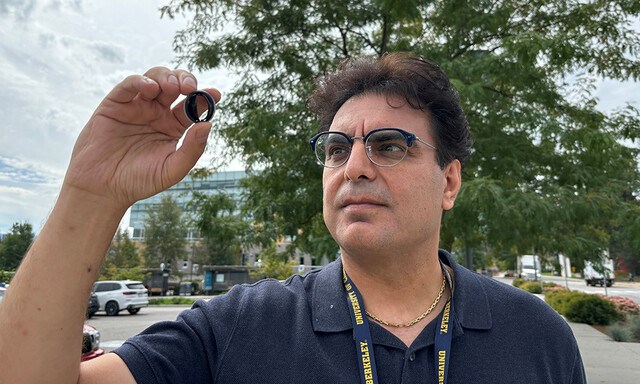A team of researchers from the University of British Columbia Okanagan believe they have found a game changer in heart valve technology.
Dr. Hadi Mohammadi, an associate professor with the school of engineering, says their latest work, dubbed the iValve, is their most advanced yet and combines the best of two technologies—mechanical and tissue—when it comes to replacement heart valves.
“Tissue valves generally perform better than mechanical valves because of their shape, but last only 15 to 20 years on average, which would require another replacement. Mechanical valves can last a lifetime, but do not perform as well as tissue valves, requiring patients to take daily anticoagulants,” says Dr. Mohammadi.
“We have produced a new mechanical heart valve that combines the best of both worlds—offering the performance of tissue valves with the long-lasting durability of mechanical valves. We believe this valve could make life easier and safer for patients.”
Dr. Mohammadi says the breakthrough was made possible through an international collaboration with ViVitro Labs and independent consultants Lawrence Scotten and Rolland Siegel. The research was funded by Angeleno Medical and published this month in the Journal of Biomechanics.
“This is the only valve of its kind to be designed and built in Canada,” says Dr. Mohammadi. “We are incredibly proud of this valve as an example of the engineering innovation coming from UBC and Canada.”
Dr. Mohammadi says while have long been in use, the biggest challenge has been to perfect the technology for the smallest hearts—tiny infants.
“What is particularly exciting about the iValve, is that it was specifically designed for high-heart-rate applications, such as in pediatric patients,” Dr. Mohammadi says.
The prototype has performed well enough in mechanical lab tests so the next step is to begin animal and clinical trials, which could begin in the next two years.
In the meantime, they will also be using the technology and techniques to develop new valves.
“This valve is designed to allow blood flow to the aorta, which is the body’s largest artery, and the blood vessel that carries oxygen-rich blood away from the heart throughout your body,” explains Dr. Mohammadi. “Next, we will take what we have learned and develop one for the mitral valve. That valve is responsible for making sure that blood flows from your left atrium to your left ventricle. It also ensures that blood doesn’t flow backward between those two chambers.”
Heart Valve Performance Lab Manager Dr. Dylan Goode is excited about what the future holds for the iValve—and for the benefits it could bring to patients.
“We have shown that the iValve can provide the structural benefits of a mechanical heart valve and last a patient’s lifespan while providing improved hemodynamic performance, meaning an improvement of the way in which blood flows through vessels,” says Dr. Goode.



